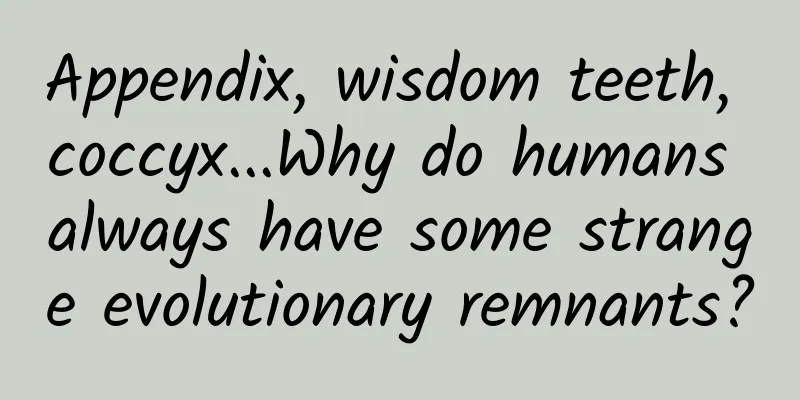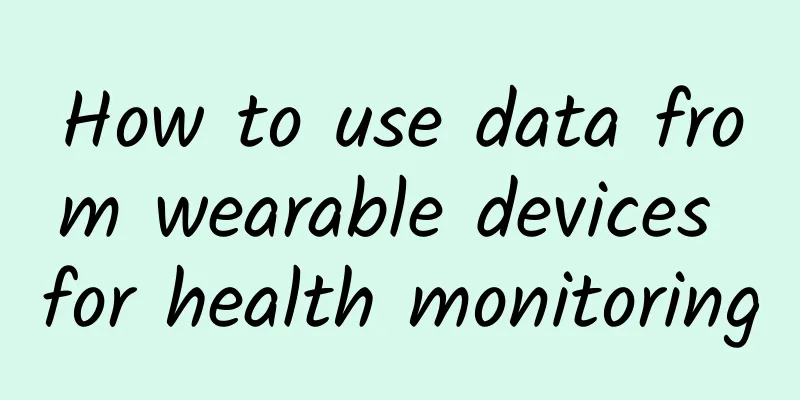Appendix, wisdom teeth, coccyx...Why do humans always have some strange evolutionary remnants?

|
© Getty Images Leviathan Press: It's said that many people have extra nipples, which sounds a bit funny, but it actually involves a very serious evolutionary phenomenon: After the sperm enters the egg, the two cells combine to form an embryo. Around the fourth week of embryonic development, two narrow cells of the ectoderm (the ectoderm that eventually develops into skin) gradually thicken. These two narrow cells of the ectoderm are called milk lines, and they stretch from the armpits down to the chest and stomach, all the way to the upper thighs next to the groin. Over the weeks and months, the narrow strips of cells become thicker and become mammary ridges. Eventually, some of the mammary ridges remain on the chest and develop into breasts and nipples, while the remaining mammary ridges gradually disappear. As the fetus continues to develop, the mammary ridges that develop into breasts and nipples usually disappear, but there are exceptions. However, sometimes the mammary ridges do not disappear all of a sudden. When this happens, an extra nipple may develop. In fact, compared with extra nipples, I think the nictitating membrane is cooler: when there is a sandstorm, the streets are full of people with their nictitating membranes blinking, and the scene is quite sci-fi. I envy people with extra nipples. To be honest, it's not out of any lechery - I envy people who can move their ears, too. I have no shortage of quirks, I just like what these oddities reveal about human evolution. Our bodies are filled with tiny remnants of who we are and what we once were. We have forward-looking eye sockets like gorillas[1] and thumbs like chimpanzees. The ability to move our ears, a vestigial tailbone, membranes in our eyes, extra nipples – these are hints that we only need to look at the evolutionary remnants in ourselves to see similarities to our ancient family. This image shows the differences between human and chimpanzee thumb muscle models, which researchers use to study the evolution of thumb dexterity. © Alexandros Karakostis There are many examples of this evolutionary remnant in our anatomy. For example, in our eyes, there is a structure at the inner corner of the eye called the Plica semilunaris. This is a remnant of our nictitating membrane – a thin, transparent membrane that flashes quickly from the inner corner to the outer corner of the eye[2]. © Tumblr © Tumblr In some mammals, birds, amphibians, and reptiles, the nictitating membrane protects vision by sweeping away grit and moistening the eye, while still allowing the animal to see the world (relatively) clearly. In humans, this tiny remnant at the inner corner of the eye lubricates the eye and controls the drainage of tears. Some people can make a special skill out of their evolutionary remnants. Those of us who can move our ears can voluntarily control tiny muscles that were once used to orient our ears toward important sounds. This talent was probably lost when we switched from nocturnal to diurnal life about 25 million years ago. For the past few million years, we have been paying attention to each other's gazes and facial expressions. © Giphy But even in those who can’t move their ears at will, our auditory skills aren’t completely lost. A 2020 study[3] showed that our ears still have tiny, involuntary muscle reactions when we hear sounds. Our ears still prick up slightly when we focus on picking up new sounds — a trait that links us to many animals, including dogs, cats, squirrels, rabbits, and more. © Sebastian Kaulitzki/Science Photo Library/Getty Images Our most famous remnant is probably the part on our buttocks - the coccyx. These last vertebrae to fuse were once a tail, which helped adjust our weight and keep our bodies balanced when our ancestors walked on all fours. Our ancestors lost their tails through a genetic mutation about 20 to 25 million years ago, which may have helped them eventually walk upright (and caused our subsequent back pain). © PrimoGIF Another lingering phenomenon is goose bumps. When we feel cold, excited or scared, tiny arrector pili muscles in our skin raise our now-useless hairs. This is a reminder that we once had hair that could be fluffed up for warmth or display. My favorite remnant is the extra nipples. About 6% of people have an extra nipple, sometimes called supernumerary teats.[4] I prefer to call them “tiny teats.” These tiny nipples are located along the nipple line, which runs from the armpits down the sides of the torso past the navel. This line forms as a ridge during fetal development. As we develop in the womb, this ridge gradually regresses until only two protrusions of breast tissue remain—our nipples. But in 5.6% of people, the regression is not complete. These people will have a tiny extra nipple on the nipple line - sometimes it's a visible nipple, sometimes it's a birthmark the color of the areola. These "micronipples" - or supernumerary nipples - are twice as likely to be present in males as in females at birth. Extra nipples aren't weird; regression is. In most other mammals -- cats, dogs, raccoons, squirrels, and so on -- the milk lines develop into paired mammary glands, or multiple pairs of nipples. This arrangement works well when an animal needs to nurse multiple pups. Only when a mammal focuses on raising only one or two pups at a time does the extra nipple become redundant. © Catster The fact that we have two nipples reflects the way we live now—we invest intensively in one or two children. Our extra nipples, however, reflect who we once were. These are organs we no longer use, but our bodies haven’t lost them entirely because there’s no real evolutionary pressure. I know people with extra nipples and ears that move. I envy them. All of these are reminders that we once needed more flexible ears to hear the calls of the forest and feed our many babies. Sometimes we needed an extra eye mask to protect us from sand or rain. We relied on our tails to keep us balanced while we leaped from branch to branch, climbed rocks, and ran on all fours. All of this connects us to our wider family, our animal family. Many people now feel a deep desire to understand our past — to meet our distant relatives. People use DNA services like Ancestry.com and 23andMe to find siblings and cousins, or to dig up family secrets. Some seek clues to medical mysteries, others search for their past — histories torn apart by the slave trade, war or genocide. People connect with newfound relatives by looking for similar jaws, smiles, shoulder gestures and more. Finding our distant human relatives can bring new relatives and communities, even if it's just sharing recipes and hobbies. Finding our evolutionary family tree brings us closer together. We are human, mammals, and vertebrates. Seeing ourselves in a dog's pricked ears, an alligator's glassy eyes, a squirrel's tail, or an opossum's nipple can bring us closer - as weird as it sounds. Personally, when life gets overwhelming, I find our evolutionary remnants to be an unexpected comfort. We may be frantically trying to schedule a meeting for 15 people in different time zones, but deep down, our evolutionary relics tell us that we are not that far removed from the furry things that once hung from trees and nursed their young - and that gives us extra perspective. By Bethany Brookshire Translated by tamiya2 Proofreading/tim This article is based on the Creative Commons License (BY-NC) and is published by tamiya2 on Leviathan The article only reflects the author's views and does not necessarily represent the position of Leviathan |
<<: The cleaner these 5 parts of your body are, the longer you may live!
>>: Angel or devil? Don’t be fooled by its cute appearance, it is actually very ferocious!
Recommend
iPhoneX can be used for paternity testing? Your father set up FaceID, if you are the biological child, you can also unlock it
When the iPhone X was first released, the most ey...
The test of the “long-range” drone is imminent, is a new air combat pattern coming?
Recently, General Atomics Aeronautical Systems an...
How to plan an excellent event? Follow these 5 steps
Whether you are doing user operations, new media ...
The movable type printing in history textbooks is still in use in this small village!
Wood type printing Author: Lei Biyu Source: "...
Is there a health risk when washing baby clothes with adult clothes? The truth is surprising...
Author: Nine-pointed Star popular science author ...
A passenger saw an "alien" sitting next to him on a plane and exclaimed: What the hell is this?
The story begins on an ordinary flight. A passeng...
The big-screen phone bet is right! iOS has reversed its global market share
[[125989]] Last year, Apple released two large-sc...
Nreal Air review: After smartphones, AR glasses may change the world again
The ancients said: "A leaf blocks the view o...
The loyal "guardian" of warmth and quality: cork oak
Thermos bottles are essential daily necessities f...
How to plan the core selling points of a brand? One model to get it done
The company's new brand is about to enter the...
World Health Day: Can’t give up the taste? “Sodium” is not a good idea! If you like strong flavors, you should reduce the amount of salt!
What are the difficulties in reducing salt intake...
What are the functions of the flower group buying mini program? How much does it cost to develop a flower shop mini program?
Every time a festival comes, many people will buy...
The 100th launch! The Long March 4 series carrier rocket successfully launched the Fengyun-3-06 satellite
At 11:47 on August 3, 2023, my country successful...
Brand marketing promotion: How to learn the product placement of "The Debaters"?
Since its inception, product placement has faced ...
Is it technically possible to bring everyone in the country into one WeChat group?
According to WeChat public data, in September 201...









